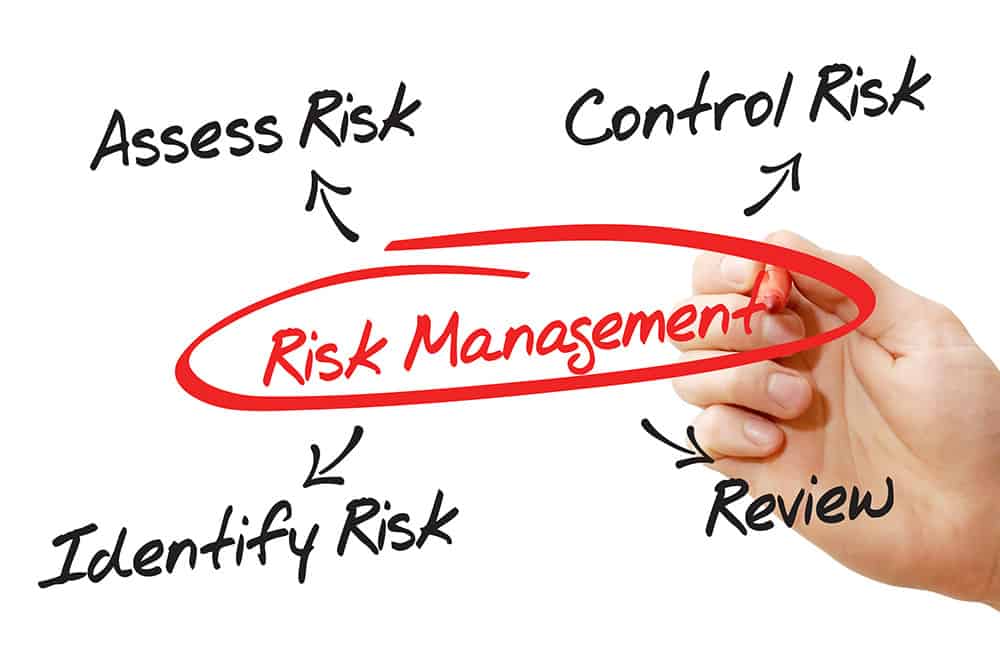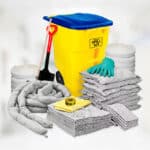
Carers, other employees, and residents of care homes are often exposed to hazardous chemicals or harmful substances. So, it’s vital that all workers understand the importance of COSHH.
This key legislation provides information and instructions on how to handle, store and use hazardous substances correctly. Failure to comply with the COSHH rules can result in significant penalties or lead to someone being severely injured or even killed. This article takes you through the main COSHH principles and explains how they relate to care homes.
What Are the COSHH Regulations?
First introduced in 1988, the Control of Substances Hazardous to Health Regulations 2002 (COSHH) further clarifies the responsibilities of employers and employees under the Health and Safety at Work Act 1974.
The COSHH regulations were specifically designed to protect workers and members of the public from harmful substances. The COSHH regulations stipulate that employers have a responsibility to take measures to prevent staff from exposure to any hazardous substances or to limit their exposure as much as is practically possible.
The COSHH regulations are enforceable by law and are overseen by the Health and Safety Executive (HSE). Any employer who has been found to have breached the COSHH regulations can be charged with a criminal offence. Fines for breaches of COSHH are not limited and can be set at any amount. In serious cases, prison terms may also be applicable.
COSHH Training
Our COSHH Training course provides basic awareness to trainees to help them identify the dangers and adopt safe working practices whilst working with hazardous substances, as well as, comply with the law.
How are Hazardous Substances Defined Under COSHH?
Hazardous substances may be used during daily work duties, they may be produced as the result of work activities, or may occur naturally in the work environment.
COSHH designates hazardous substances into the following categories:
- Chemicals or products that contain chemicals
- Fumes, dust, mists and vapours
- Gases and asphyxiating gases
- Biological agents (germs)
- Nanotechnology
- Disease-causing germs
- Substances that have properties that may create a health risk
You can learn more about hazardous substances here.
What Hazardous Substances Can be Found in Care Homes?
The care industry in the UK is huge and continues to expand every year. There are now more than 17,000 care homes throughout the UK. While many people do not view care homes as overly hazardous working environments, there are many workplace risks in care homes.
The following hazardous substances are typically found in care homes:
- Cleaning agents – Such as bleach-based or chlorine-based products, oven cleaners, drain cleaners, washing detergent and cleaning products that can cause irritations after prolonged exposure
- Substances used in maintenance work – Maintenance work can involve the use of glue, solvents, paint, lubricants and chemicals to treat water. Dust or particles may also be released into the air during maintenance work
- Biological hazards and medicines – Care home workers must often deal with clinical waste and soiled bedding, clothing or other materials that have come into contact with bodily fluids. The work environment may contain infectious pathogens. Pharmaceuticals may contain biological agents that are hazardous to health
- Personal protective equipment (PPE) – PPE such as latex gloves may irritate the skin after prolonged use
If they do enter your system, hazardous substances can have several different effects. Some effects are local and immediately visible at the direct point of contact. Some substances result in delayed effects that occur over long periods.
How to Comply with COSHH Regulations in Care Homes
COSHH requires employers to proactively tackle potential problems by undertaking a risk assessment of all identifiable hazards in the work environment.
A risk assessment is a systematic process of identifying hazardous substances, evaluating risks, and implementing suitable safety controls. These controls must be monitored on an ongoing basis to check they are effective. Where necessary, the health of certain employees should also be checked as an added precaution.
Conducting COSHH Risk Assessments
A COSHH risk assessment can be done by the employer, by a nominated ‘competent person’, or by a third party. The person who conducts the COSHH risk assessment must fully understand all relevant legislation and have the authority, resources and time required to conduct the risk assessment properly.
All relevant safety information must be made available to the risk assessor. The risk assessor must be able to interview employees and residents and be given full access to evaluate the care home environment. A report must be produced which details what risks were found and what control measures were put in place. A COSHH risk assessment must be updated if there are any changes to working practices or the care home environment itself.

How to Control Potential Hazards in a Care Home
The steps to conducting a COSHH Risk Assessment are to:
- Identify all hazardous substances in the care home and list the activities where people may be exposed to these substances
- Identify all persons who may be exposed to hazardous substances
- Evaluate the level of risk based on the nature of the hazard and the duration of exposure
- Develop and implement control measures to eliminate or minimize risks
- Record your findings in your risk assessment
- Review your assessment – regularly and when your hazards or anything in the working environment changes
How to Develop a COSHH Policy for a Care Home
The COSHH risk assessment report should provide details that can be used to develop an overall COSHH health and safety policy. It is a legal requirement to record your risk assessment in any care home with more than five staff members.
The COSHH health and safety policy must be reviewed and updated if there are any changes to relevant health and safety legislation, if working processes change, if an injury or incident occurs, or if a staff member reports an issue with control measures.
The COSHH health and safety policy must be distributed to all staff members. It needs to provide employees with clear and easily understandable information on what safety measures they must follow. Training should be provided to make certain that staff understand what their responsibilities are.
COSHH Training for Care Home Employees
All employees must understand the importance of COSHH regulations in a care home environment. Doing so will ensure that your business complies with the law and that your staff, the residents, and members of the public stay safe.
Human Focus provides affordable, professional health and safety training that teaches participants how to apply COSHH principles in the workplace. The COSHH courses can be taken in segments online and are fully accredited by reputable authorities. Trainees will learn everything they need to know about how to safely work with hazardous substances.
Create a safer workplace for all. Discover the entire range of Human Focus health and safety courses today!





















